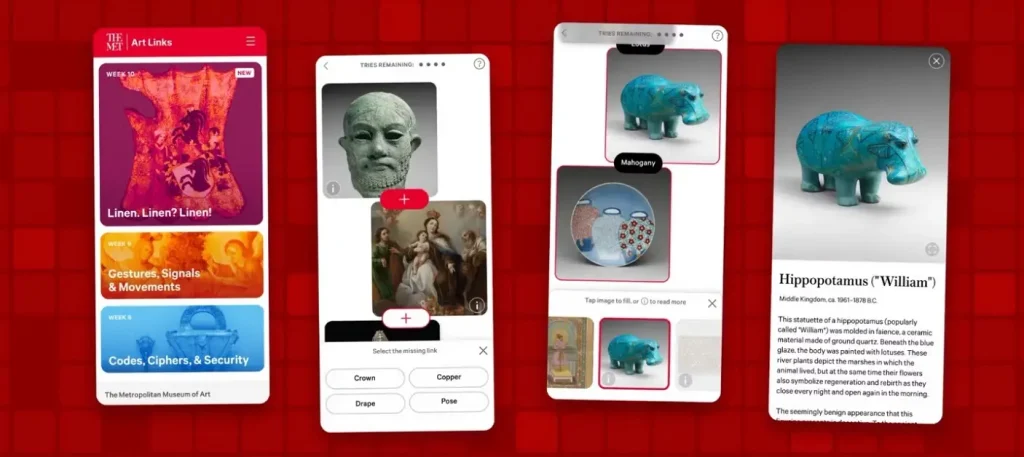The Metropolitan Museum of Art (The Met) has teamed up with TRLab to introduce an innovative blockchain-based game that rewards players with NFTs for uncovering connections between various artworks.
This initiative offers participants the chance to win one of 500 prizes related to the museum’s offerings.
The Met Launches Its First Blockchain Project with Artistic Puzzles
According to Dblock, this game challenges users to discover links between different artworks housed in The Met. For instance, players might be tasked with finding a common material between two sculptures or creating a chain of connections that ties artworks from diverse geographies and time periods. Designed for mobile devices, the game is reminiscent of the New York Times’ Connections game, which encourages users to find associations between words, but with a focus on art history.
How the Game Works
The gameplay involves users completing puzzles to earn NFTs. Each week, new puzzles featuring 140 artworks from the museum’s collection are released. Collecting NFTs allows players to unlock rewards such as gift shop discount codes or a private tour guided by the museum’s experts.
Collaboration and Vision
This project is a collaboration between The Met and TRLab, a blockchain startup focused on the art world. TRLab has previously partnered with notable entities like Vogue, the Calder Foundation, and other prominent art institutions.
During the event, Keith Grossman, President of MoonPay, highlighted the project’s collaborations and attributed the growth of cryptocurrencies to “generational shifts and the convergence of technological changes.” He shared insights from his experiences with the TIMEpieces project and emphasized that user experience (UX) should be the primary focus of future projects. Grossman stated:
In 2021, technology was leading, and user experience was overlooked. Ultimately, people don’t care about NFTs; they just want the experience.
Game Challenges and Rewards
New challenges will be released every Thursday at 12:01 PM Eastern Standard Time (EST) for the next 11 weeks. With each additional NFT collected, players gain access to more rewards. Additionally, players can earn seven in-game achievements, with five available for free and two that can be purchased at an affordable price.
Conclusion
The Met’s foray into blockchain technology through this interactive game marks a significant step in merging art with digital innovation. By leveraging NFTs and blockchain, The Met is not only enhancing user engagement but also exploring new ways to connect with audiences worldwide. This initiative reflects a broader trend of cultural institutions embracing digital platforms to enrich the visitor experience and expand their reach.
As the game unfolds over the coming weeks, it will be interesting to see how players respond to the challenges and how The Met continues to integrate blockchain technology into its offerings. This project underscores the potential of NFTs and blockchain to transform traditional art experiences, offering a glimpse into the future of museum engagement.
